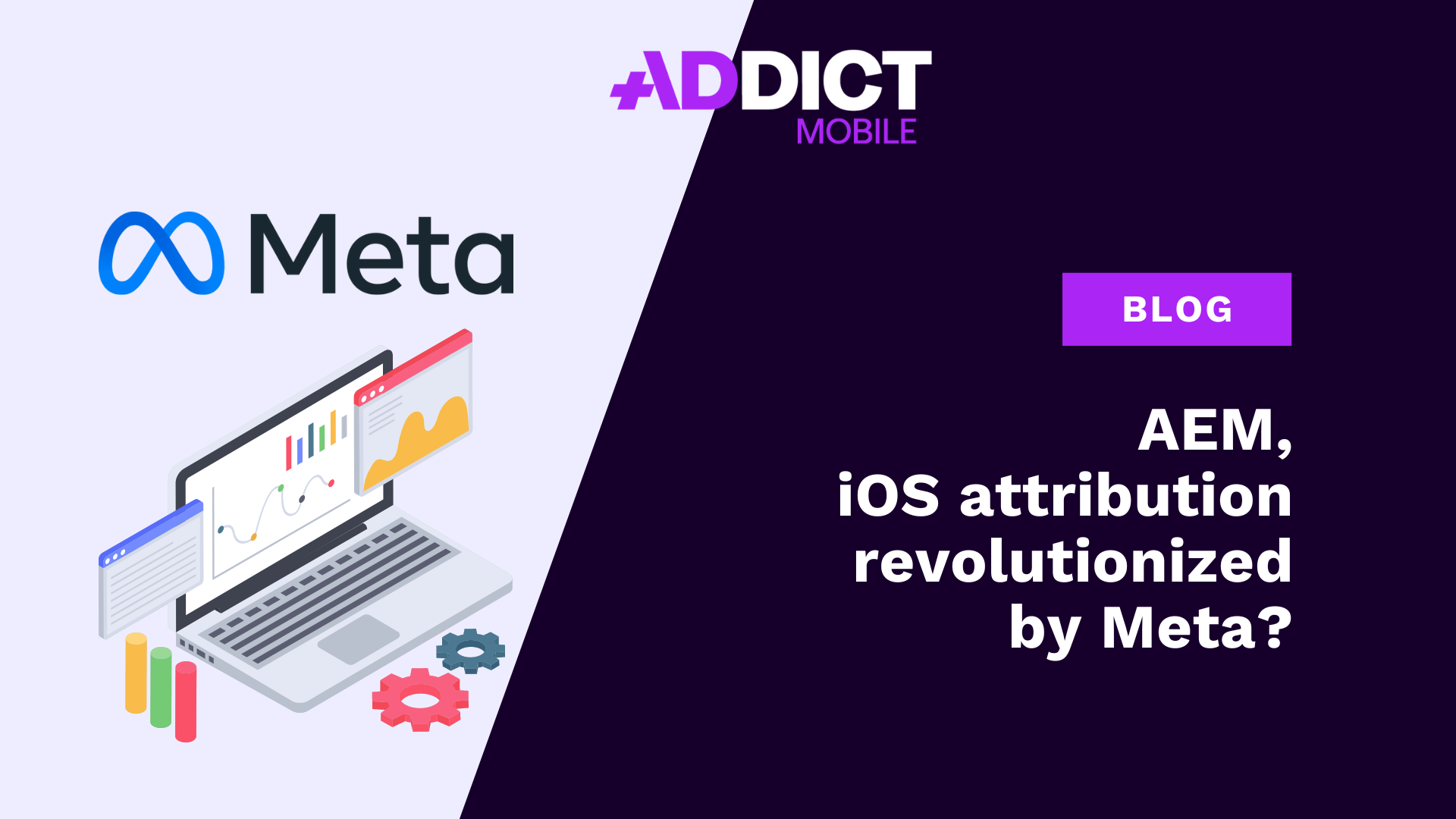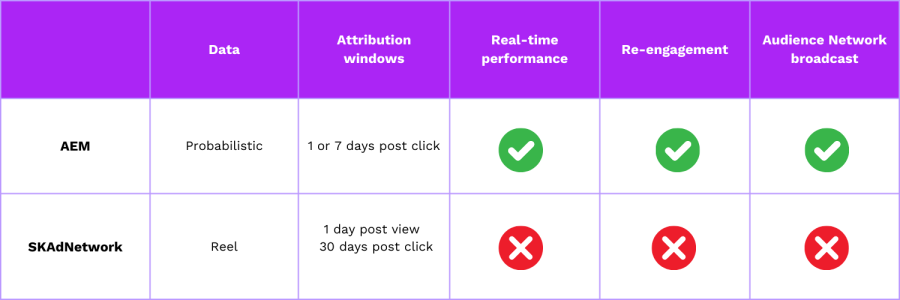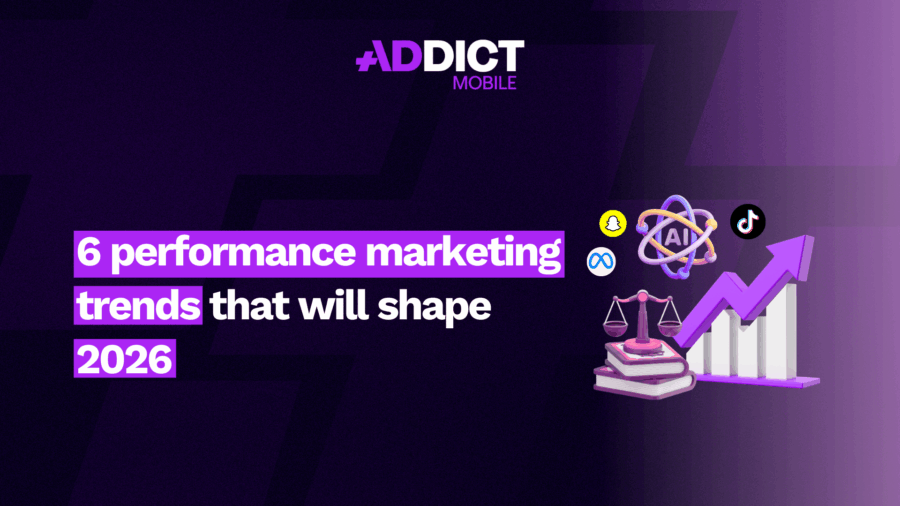Aggregated Event Measurement, iOS attribution revolutionized by Meta?

In March 2021, Meta introduced the Aggregated Event Measurement (AEM) protocol, enabling the collection of campaign performance data while preserving user privacy. Initially available only for web campaigns, it was expanded in October 2021 to include app re-engagement campaigns. More recently, in June 2023, AEM expanded its capabilities to include app promotion campaigns, thereby broadening its impact on the mobile market. Having used it since its release, we’ve been actively exploring and leveraging its capabilities for multiple clients, gaining invaluable insights.
Aggregated Event Measurement in response to SKAdNetwork
Since the iOS 14.5 update in May 2021 and the introduction of Apple’s App Tracking Transparency, aimed at protecting user privacy by restricting data collection for advertising campaigns, the landscape of acquisition has been disrupted. Campaign data is no longer as precise, and its quantity has decreased, making performance analysis in tracking tools more complex.
To address this privacy challenge and the SKAdNetwork, Meta has created Aggregated Event Measurement (AEM), a protocol for measuring the web and app activity of iOS 14.5 users and later versions (accounting for over 94% of iOS users). Meta aimed to create a tool aligned as much as possible with SKAN but with a distinctive approach that offers more flexibility all without using the Advertising ID.
More information for greater granularity
By remaining within the Meta ecosystem, this solution retains 1st party data and therefore provides greater granularity on iOS user behavior and actions within an application. This fills the gap created by Apple’s lack of reporting of this data.
Furthermore, AEM also enables Meta to optimize its algorithm by defining its own rules, unlike the SKAdNetwork rules that were imposed. By adopting this approach, Meta allows advertisers to measure how iOS users interact with their applications without accessing the ad ID.
Currently, this applies only to iOS users, but in the future, it could be expanded to Android users with the introduction of the Privacy Sandbox.
Optional but recommended SKAN configuration
Aggregated Event Measurement makes SKAN configuration optional. However, we still recommend configuring SKAN to avoid reliance on a single measurement method specific to Meta. The idea is to obtain more precise details for better estimations, hence the importance of comparing data from three perspectives: AEM, SKAN, and a third-party tracking tool like Adjust or AppsFlyer.
It is essential to note that AEM is neither a dashboard nor an API. The protocol is integrated into the SDK, so the only requirement to have it is to use Meta’s SDK or that of a measurement tool like Adjust or AppsFlyer. Once implemented, it offers much broader possibilities than SKAdNetwork for user acquisition campaigns.
The benefits of AEM
Aggregated Event Measurement offers features unavailable with SKAN in the context of acquisition campaigns:

- Attribution Windows
The attribution window determines a period during which conversions can be attributed to a specific ad, later used to optimize the campaign.
With Aggregated Event Measurement, you can choose attribution windows of:
– 1 day post-click for installation optimizations
– 1 or 7 days post-click for app event optimization (AEO) or value optimization (VO)
Aggregated Event Measurement therefore provides greater flexibility than SKAN, which does not include the possibility of customizing the attribution window.
- Near real-time performance
With AEM, there’s no need to wait 48 hours (on average), as with the SkadNetwork, to receive campaign performance. This provides increased visibility and better responsiveness in decision-making during the initial days. This option becomes essential in specific cases, such as apps offering free 7-day trials. AEM allows better user qualification by adjusting attribution windows based on key actions within the app.
- Re-engaging users who have already used the application
AEM develops the ability to measure re-engagement performance on iOS users who have previously used the app, which is not supported by SKAN 3.0 or 4.0 (but will be with version 5.0). To achieve this, Meta doesn’t rely on the advertising ID but utilizes other signals for implementing a probabilistic method, such as hashed email addresses, phone numbers, IP addresses, and more. These details are then compared by Meta to its own 1st party data, enabling these behaviors to be associated with users using a probabilistic method.
- Audience Network Inventory
Aggregated Event Measurement supports distribution on the Audience Network inventory, a feature not available with SKAdNetwork campaigns. This audience allows advertisers to display their ads outside the Meta ecosystem, on third-party apps, and partner websites. AEM thus provides the ability to reach a broader audience.
A viable protocol in the long run?
In conclusion, although Aggregated Event Measurement campaigns offer additional optimization and targeting opportunities, they do not completely revolutionize iOS attribution. Indeed, it is recommended to maintain a SKAN configuration to leverage both data sources and strengthen analytical capabilities.
However, Meta’s current probabilistic method, which uses information such as IP addresses to identify users, raises uncertainties about the sustainability and viability of this protocol. Two entities are authorized to assess its compliance with regulations: government institutions and private organizations such as Apple. Apple, in particular, attaches great importance to avoiding the identification of users who have opted out of the ATT.
In this article, Mobiledevmemo highlights that the collection of the advertising ID is carried out by MMPs, and in the event of a dispute, the responsibility would fall on them rather than on Meta.
NEWS
Article in relation

Our 5 Favorite Creative Tools on TikTok
Having good creatives is essential. But what truly makes the difference is knowing where to find inspiration and how to produce more efficiently...
Published on 10 December 2025
6 performance marketing trends that will shape 2026
2026 is shaping up to be a pivotal year for performance marketing. With new growth channels emerging, AI-driven automation accelerating, evolving measurement models,...
Published on 2 December 2025
Best ASO tools to grow your app store…
– by Oriane Ineza, Content Marketing Specialist at AppTweak In an increasingly competitive app market, visibility is everything, and a solid, comprehensive set...
Published on 30 November 2025

